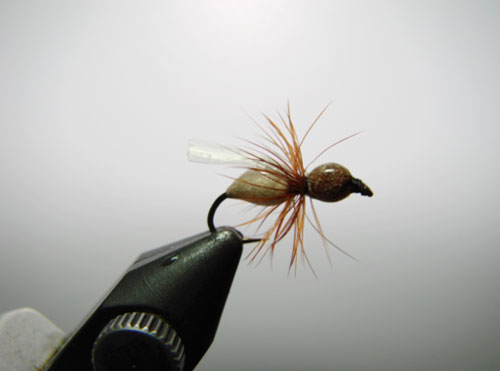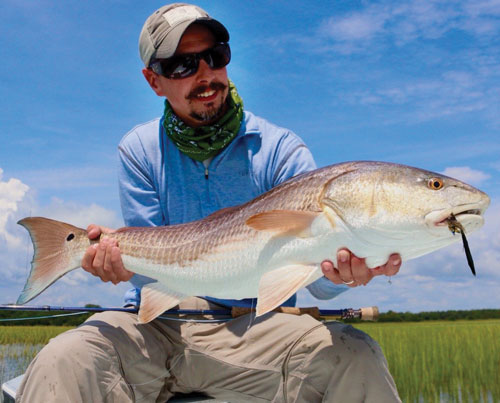Spring is in full swing and with it comes an abundance of terrestrial life. Among all of the land born insects, one of the most prolific, is the ant. Ants can be a huge source of food and protein for trout, as they frequently find themselves near the water and in nearby vegetation. Whether they fall into the stream by accident or get blown off of overhanging branches, they find themselves in the feeding lane of trout.
A lot of ant fly patterns are of the dry fly variety; however, they don’t always float and eventually will sink. They sit very low in the surface film and I find that trout feeding on ants are often mistaken for feeding on emergers of some sort. In situations where I see trout rising and feeding, if I cant indentify the aquatic insect, I will default to an ant pattern. They can be run in tandem or as a dropper to an emerger or dry fly pattern and can be deadly.
Another way to fish an ant would be to tie it as a wet fly, or simply ad a bit of split shot to the tippet and fish it under an indicator. This method has proven to be very successful during terrestrial seasons. The above pattern is a very low riding ant pattern. The body is buoyant but adding the CCG to the foam offers a little durability and weight. If dressed properly with floatant, it will remain just in the surface film, although I would say that my favorite way to fish it is subsurface. It has been a very productive pattern in red and black and I also tend to fish it on breezier days – days that lend to food being blown from nearby vegetation into the stream.
Colors of the fly patterns can be adjusted for the ants you primarily see along the riverbank where you fish. As always, best wishes and tight lines!
Hook: Tiemco #101, Sizes 12-18
Thread: UNI-Thread 8/0, Black
Abdomen: 2mm Closed Cell Foam in tan coated in CCG Hydro.
Wing: Medallion Wing Sheeting, Clear
Hackle: Light Ginger
Head: 2mm Closed Cell Foam in brown coated in CCG Hydro.
Dustin Stanberry is an instructor at Biltmore Fly Fishing and Sporting Clays located in Asheville, NC.

